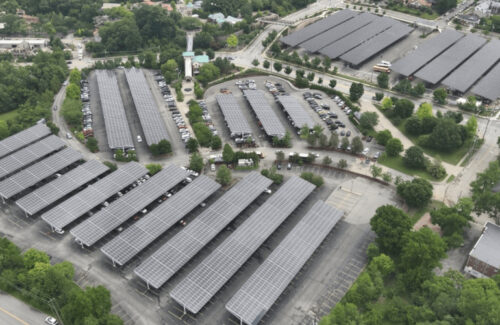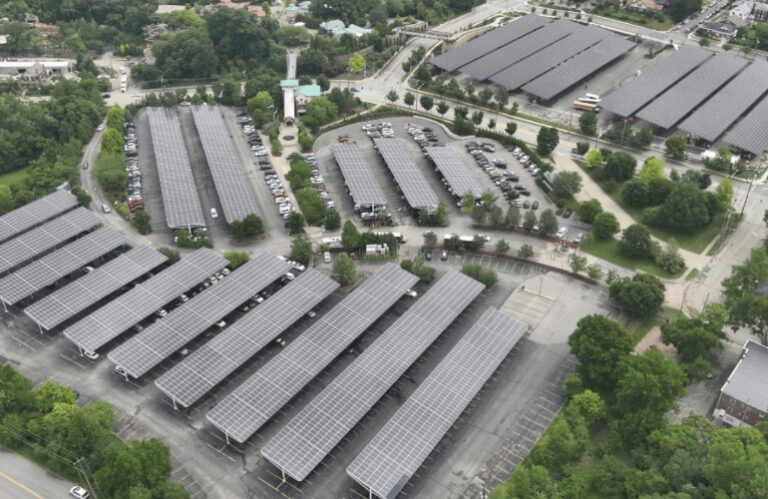Melink Solar has completed construction of a solar array at the Cincinnati Zoo and Botanical Garden in Ohio. The 2.8 MW solar parking project uses a Terrasmart rack system, with company Gibraltar Industries also helping with the mechanical installation.
 “Delivering this project for the Cincinnati Zoo aligns closely with our mission to build sustainability for our customers,” said Seth Parker, CEO of Melink Solar. “We are honored to support the Zoo’s commitment to environmental stewardship and are proud to have worked with all of our partners on this project.”
“Delivering this project for the Cincinnati Zoo aligns closely with our mission to build sustainability for our customers,” said Seth Parker, CEO of Melink Solar. “We are honored to support the Zoo’s commitment to environmental stewardship and are proud to have worked with all of our partners on this project.”
The system integrated nearly 5,000 bifacial modules connected via string inverter technology. The new carport will provide shade for approximately 800 vehicles. The zoo now has 4.55 MW of solar energy on site and the collective portfolio will reduce the facility’s annual energy bill to about $300,000 between 2030 and 2032, down from $1.6 million in 2005, according to zoo officials.
“Solar technology, and our understanding of how to use it, has evolved dramatically since we installed our first solar panels on the Zoo’s education building in 2006,” said Mark Fisher, Cincinnati Zoo vice president of facilities, planning and sustainability. Botanical garden. “This new array is a good example of that. It will take up less physical space, but will generate almost twice as much power as the current array. Now that we are online, two-thirds of the zoo’s electrical needs will come from our parking lots.”
To help offset energy poverty in the area, the zoo has also funded an additional 165 kW of solar panels through the Community Solar Resiliency Program, supporting smaller installations in local churches, community centers and schools.
“Completing this landmark project for the Cincinnati Zoo is a significant achievement for all of us at Terrasmart,” said Yuri Reznikov, Terrasmart Chief Sales Officer. “Not only did we deliver our canopy solution on time and on budget, we are also excited about the meaningful impact this project will have for the zoo and neighboring communities.”
News item from Terrasmart


